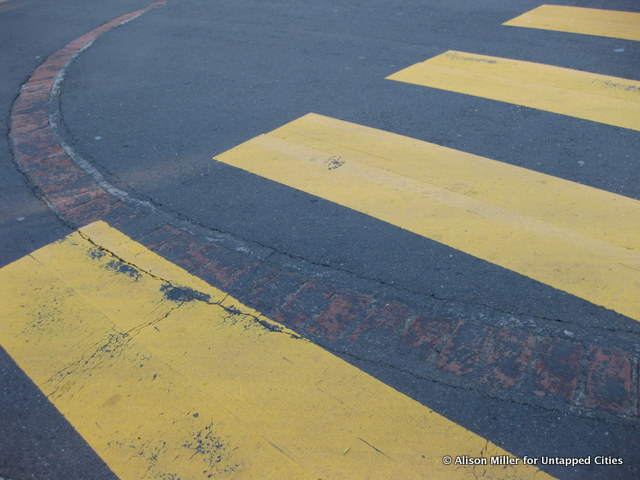They might catch your eye as you hike up the hills near Dolores Park, walk through the Richmond fog, or stroll the quiet streets of Cole Valley: red brick circles are embedded in dozens of San Francisco’s roads throughout the city.
These brick circles might look decorative, but there’s much more to them than what’s on the surface. Underneath each is a concrete tank that holds 75,000 gallons of water. 172 of these underground cisterns exist throughout the city, making up an important component of San Francisco’s Auxiliary Water Supply System (AWSS).
The AWSS was developed in response to 1906 earthquake, which caused a devastating combination of fires and damage to the major water lines that were needed to fight them. Left with few usable hydrants and a lack of sufficient backup water supply, firefighters were unable to stop the blazes for days.
As city engineers developed plans for a better emergency water system, they noted that San Francisco’s 23 cisterns were among the few firefighting resources that had worked in the aftermath of the earthquake. They called for a much larger network of cisterns throughout the city. Over one hundred were constructed in the next few decades, including one cistern every 3 blocks in key downtown areas. Along with cisterns, the AWSS includes a major reservoir on Twin Peaks and pump systems that draw directly from San Francisco Bay. These backup resources were critical in fighting fires that broke out after the 1989 Loma Prieta earthquake.
 Red bricks outline a cistern on Dolores Street at 24th.
Red bricks outline a cistern on Dolores Street at 24th.
Not all cisterns are outlined by the distinctive brick circles, but you can tell there’s one nearby if you spot a fire hydrant with a green top. Different colors and shapes are used to indicate a hydrant’s water source and pressure level.
 A green fire hydrant “bonnet” indicates that there’s a cistern nearby. This one is on Castro Street at 14th.
A green fire hydrant “bonnet” indicates that there’s a cistern nearby. This one is on Castro Street at 14th.
Each cistern is also covered with a manhole that reads CISTERN S.F.F.D., but they’re no longer maintained by the Fire Department. In 2010, the Public Utilities Commission assumed responsibility for the Auxiliary Water Supply System, which has survived several earthquakes but is showing its age with rust and leaks. By the end of this decade, the Public Utilities Commission hopes to have completed major renovations and seismic updates. For more information on these efforts, visit sfearthquakesafety.org.
Cistern maintenance moved to the SF Public Utilities Commission in 2010, but S.F.F.D. labels remain on manhole covers. This cistern is at Douglass and Elizabeth.

No red bricks here: this cistern cover hides in the grass at the edge of Dolores Park.







